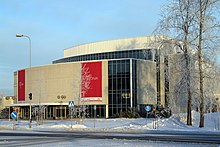
The NorrlandsOperan, is a Swedish opera company in Umeå, located in Norrland, Sweden. The ownership of NOP is divided between the Umeå Municipality (40%) and the Västerbotten County Council (60%).
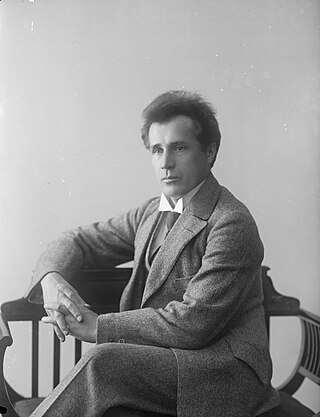
Leevi Antti Madetoja was a Finnish composer, music critic, conductor, and teacher of the late-Romantic and early-modern periods. He is widely recognized as one of the most significant Finnish contemporaries of Jean Sibelius, under whom he studied privately from 1908 to 1910.
The BBC Concert Orchestra is a British concert orchestra based in London, one of the British Broadcasting Corporation's five radio orchestras. With around fifty players, it is the only one of the five BBC orchestras which is not a full-scale symphony orchestra. The BBC Concert Orchestra is the BBC's most populist ensemble, playing a mixture of classical music, light music and popular numbers. Its primary role is to produce music for radio broadcast, and it is the resident orchestra of the world's longest-running live music programme, Friday Night is Music Night on BBC Radio 2.
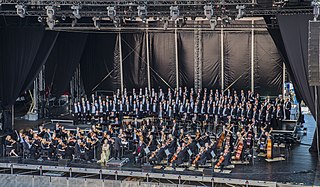
The Helsinki Philharmonic Orchestra is an orchestra based in Helsinki, Finland. Founded in 1882 by Robert Kajanus, the Philharmonic Orchestra was the first permanent orchestra in the Nordic countries. Today, its primary concert venue is the Helsinki Music Centre; the current chief conductor is Jukka-Pekka Saraste, who has held his post since the start of the 2023-24 season..
The Lahti Symphony Orchestra is a Finnish orchestra, based in the city of Lahti. The orchestra is resident at the Sibelius Hall. The orchestra was founded in 1910, and placed under the control of the Lahti municipality in 1949.
Rumon Gamba is a British conductor.

The Hallé is an English symphony orchestra based in Manchester, England. Since 1996, the orchestra has been resident at the Bridgewater Hall in Manchester.
Hannu Petteri Lintu is a Finnish conductor.
The Aalborg Symphony Orchestra is a Danish symphony orchestra based in Aalborg, Denmark. The orchestra is resident at the concert hall of Musikkens Hus and has the status of a regional orchestra of Jutland. In addition to its regular subscription series of symphonic concerts, the orchestra also serves as an opera and ballet orchestra for performances with the Royal Danish Theatre and the Danish National Opera.

Karjasilta is a district in the Höyhtyä area in the city of Oulu, Finland. The district close to the city centre is bordered by the Raksila district to the north, Finnish national road 4 to the east, the Vanhatulli and Limingantulli districts to the west and the Nokela and Höyhtyä districts to the south.

The Symphony No. 1 in F major, Op. 29, is a three-movement orchestral composition by the Finnish composer Leevi Madetoja, who wrote the piece from 1914–16 at the dawn of his professional career. Although late-Romantic in style, the symphony carefully eschews the extravagance and overindulgence typical of debut efforts, placing it among the most "mature" and restrained of first symphonies. Accordingly, the First is the shortest and most concentrated of Madetoja's three essays in the form and is the only one of his symphonies not to adhere to the traditional four-movement symphonic template.

The Symphony No. 2 in E-flat major, Op. 35, is a four-movement orchestral composition by the Finnish composer Leevi Madetoja, who wrote the piece from 1916–18 immediately following the success of his First Symphony (1916). Composed during the Finnish Civil War, the Second stands as "the most significant musical document" of the conflict and finds its composer, "deeply scarred by the experience", reflecting upon national tragedy and personal loss. Accordingly, Madetoja's Second is the longest and most dramatic of his three essays in the form and, perhaps for this reason, is the most popular of the set.

The Symphony No. 3 in A major, Op. 55, is a four-movement orchestral composition by the Finnish composer Leevi Madetoja, who wrote the piece from 1925–26 while vacationing in Paris, before returning to Helsinki, Finland to complete the work. Optimistic and pastorale in character, the symphony is today considered one of the finest symphonies in the post-Sibelian, Finnish orchestral canon; indeed, a "masterpiece ... equal in stature" to Sibelius's seven essays in the form. Although technically his penultimate symphonic composition, the Third is nonetheless—due to its successor's fate—Madetoja's final addition to the repertoire.

Elegia, Op. 4/1, is a composition for string orchestra by the Finnish composer Leevi Madetoja, who wrote the piece in 1909 during his student years. On 10 January 1910, Robert Kajanus, chief conductor of the Helsinki Orchestral Society, premiered the Elegia to great acclaim, with the piece described as the "first master work" of a budding "natural orchestral composer". Madetoja subsequently designated the Elegia as the first number in his four-movement Sinfoninen sarja, Op. 4, which the Helsinki Orchestral Society performed in its entirety under the composer's baton on 26 September 1910. The suite's three other numbers are virtually unknown, and the Elegia typically is performed as a stand-alone concert piece. Stylistically reminiscent of Tchaikovsky, it is, to date, Madetoja's most recorded and well-known orchestral composition, as well as the most enduringly popular of his many miniatures.

Okon Fuoko, Op. 58, is a ballet-pantomime for orchestra, vocal soloists, and choir by the Finnish composer Leevi Madetoja, who wrote the piece from 1925–27 concurrent with the composition of his Third Symphony. The Japonisme-influenced libretto is by Danish playwright Poul Knudsen. The story takes place in ancient Japan and, similar to Coppélia, centers around the (successful) efforts of the eponymous puppet-maker to bring a female creation to life. The result is a tragic love-triangle between the seductive doll, the infatuated Okon Fuoko, and his devastated wife. With its unique and exotic musical language, Okon Fuoko is one of Madetoja's "finest" scores; indeed, the last of his "masterpieces".
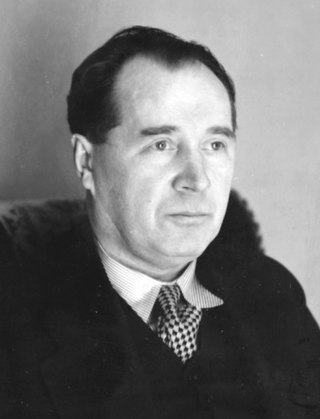
Juha, Op. 74, is a verismo opera in three acts—comprising six tableaux—written from 1931 to 1934 by the Finnish composer Leevi Madetoja. The libretto, a collaboration between Madetoja and the Finnish soprano Aino Ackté, is based on Juhani Aho's 1911 novel by the same name. The story takes place on the border between West Karelia and East Karelia, and features as its central conflict a love triangle between the farmer Juha, his young wife Marja, and a Karelian merchant, Shemeikka. Disillusioned with rural life and seduced by promises of material comfort and romance, Marja runs away with Shemeikka; Juha, who maintains his wife has been abducted, eventually discovers her betrayal and commits suicide by jumping into the rapids.
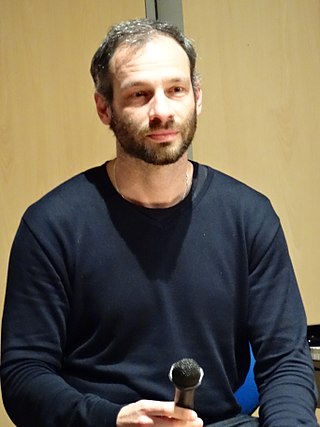
Dima Slobodeniouk is a Finnish conductor based in Finland.
Dalia Stasevska is a Finnish conductor. She is currently principal guest conductor of the BBC Symphony Orchestra and chief conductor of the Lahti Symphony Orchestra.

Kullervo, Op. 15, is a symphonic poem for orchestra written in 1913 by Finnish composer Leevi Madetoja. The piece premiered on 14 October 1913 with Madetoja conducting the Helsinki Philharmonic Society.
Anna-Maria Helsing is a Finnish-Swedish conductor.
